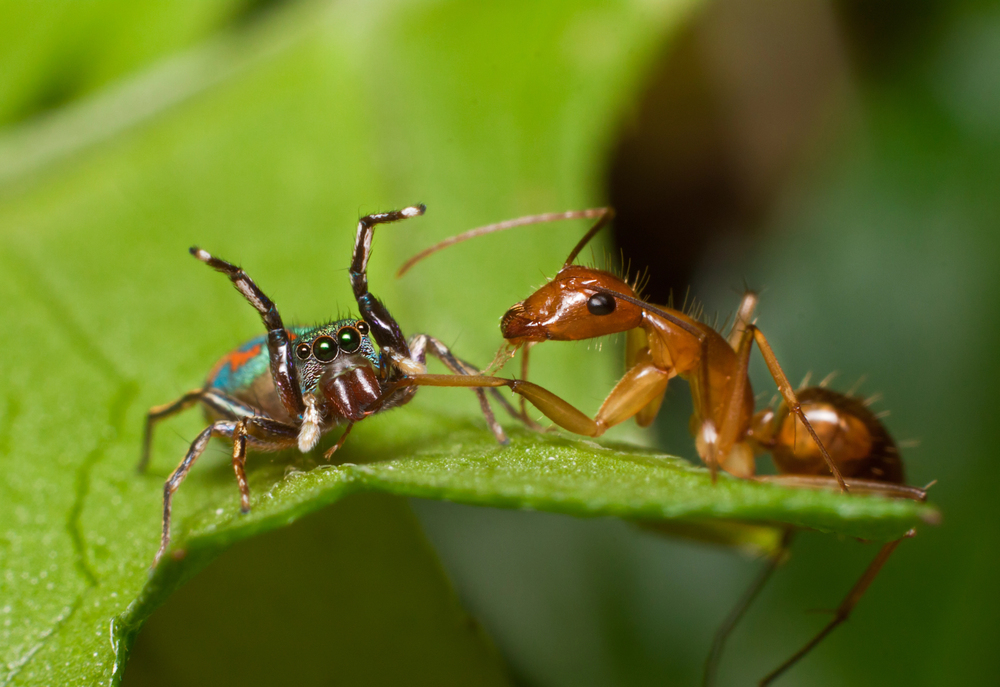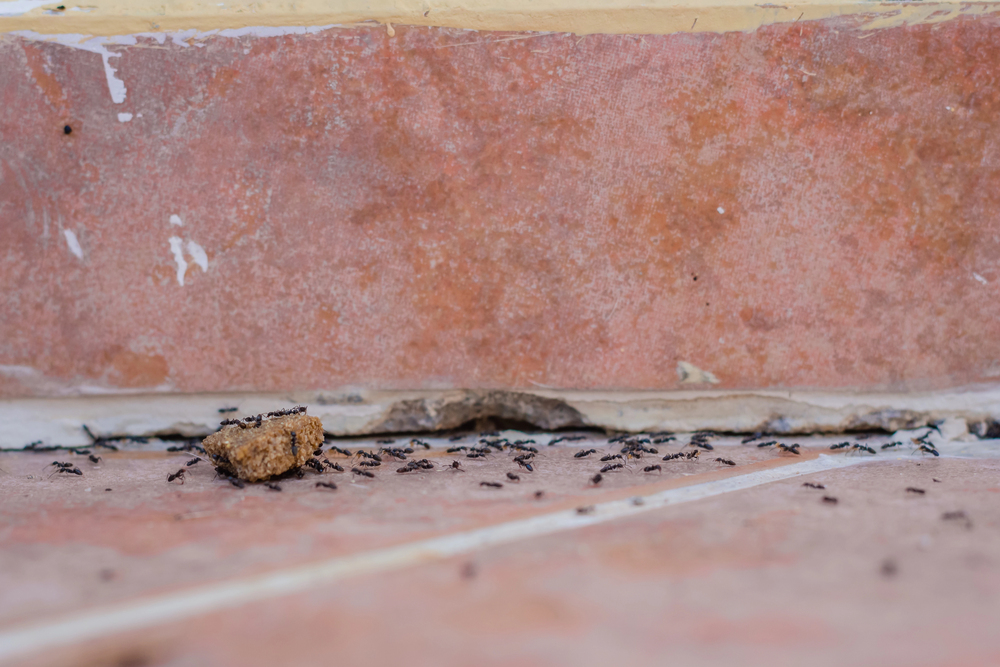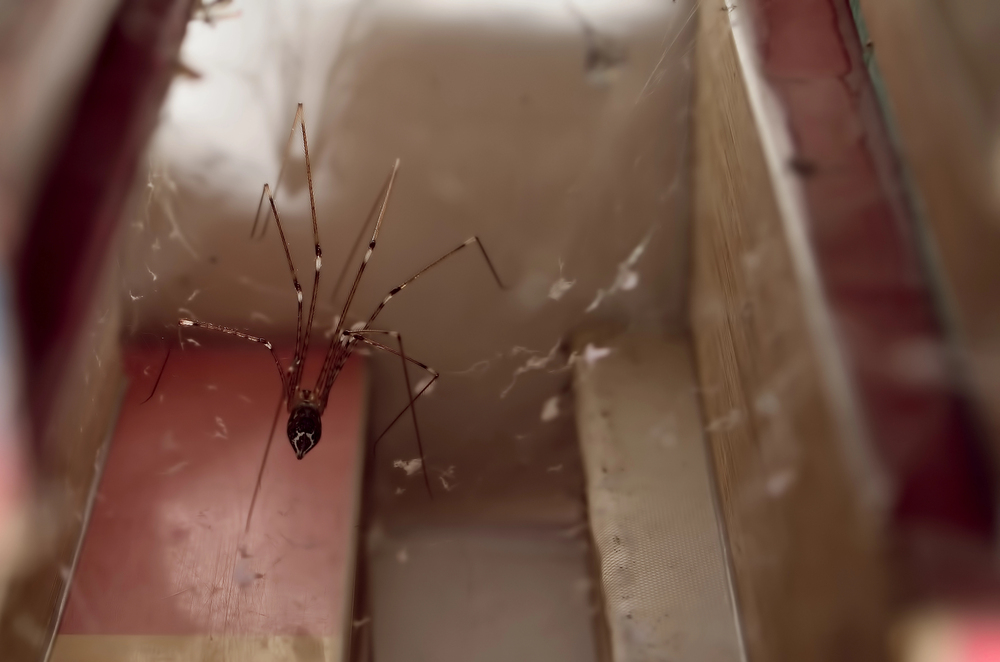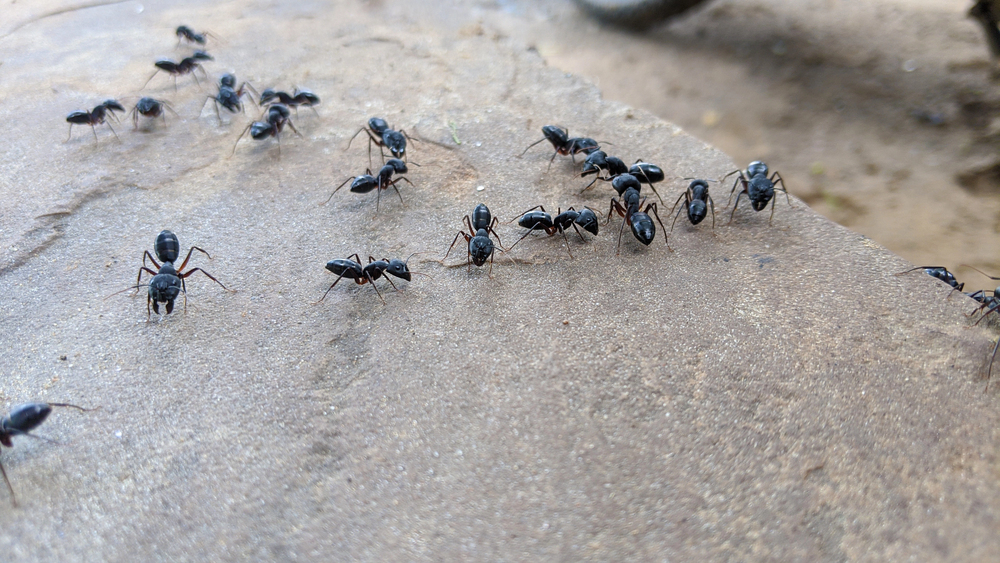
Brevard County’s unusually warm summer temperatures this year kept many homeowners in Mims scrambling to deal with an unexpected problem: massive ant trails marching straight toward their kitchens…while equally determined spiders seemed to follow close behind.
While most people focused on the ant invasion, many missed a fascinating detail: those eight-legged followers weren’t just coincidental visitors.
Do spiders eat ants? The answer reveals exactly why both pests often show up in your home at the same time. Understanding this relationship could be your key to solving both problems.
Do Spiders Eat Ants? Understanding Their Diet and Behavior

Do spiders eat ants? Absolutely. Most spider species consider ants a regular part of their diet, though the hunting methods vary dramatically. Jumping spiders actively hunt ants like tiny predators, while web-building spiders wait for ants to stumble into their silky traps.
The relationship gets more complex when you consider that not all spiders approach ant-hunting the same way.
Orb weavers, common throughout Central Florida, rarely catch ants in their large outdoor webs since ants typically travel along ground-level trails. However, house spiders and cellar spiders frequently encounter ants in the same indoor spaces where both species seek food and shelter.
Some spiders have evolved specific techniques for ant-hunting. Wolf spiders, which you might spot scurrying across your patio near the Canaveral National Seashore area, use their excellent eyesight to track and pounce on individual ants. Meanwhile, cobweb spiders create irregular webs in corners and crevices where wandering ants often get caught.
What Spiders Commonly Feed On (and Why Ants Can Be Prey)

While ants make up a portion of many spiders’ diets, these arachnids are opportunistic feeders with diverse menus, with spiders consuming up to 800 million metric tons of insects each year.
Primary spider food sources include:
- Flying insects like flies, mosquitoes, and gnats
- Crawling insects including beetles and cockroaches
- Other small arthropods such as mites and springtails
- Occasionally other spiders (yes, they can be cannibalistic)
Ants become attractive targets because they’re abundant, predictable, and often travel in exposed locations. When fire ants march across your kitchen counter or Argentine ants stream along your baseboards near the Indian River, they create perfect hunting opportunities for spiders already living in those spaces.
Do spiders eat ants of all sizes? Not exactly. Most house spiders prefer smaller ant species and will avoid carpenter ants or larger fire ants that might fight back effectively. However, larger spider species like huntsman spiders (occasionally found in Mims homes) can tackle bigger prey, including substantial ant varieties.
Reasons Spiders Find Their Way Into Your Home

Spiders don’t randomly wander into your house. They follow specific attractants that often overlap with what draws ants indoors.
Understanding these motivations helps explain why spider and ant problems frequently occur together, especially during Mims’ humid summer months when both pests seek climate-controlled environments.
Moisture
Spiders need water just like any living creature, and Florida’s outdoor humidity fluctuations drive them toward consistently comfortable indoor environments. Leaky pipes under sinks, damp basements, and even pet water bowls create ideal conditions.
Food Sources
Abundant food sources provide the second major draw. When your home already hosts populations of ants, flies, or other small insects, spiders recognize these locations as reliable hunting grounds. This creates a cycle where ant problems often lead to spider problems, and vice versa.
Shelter
Shelter opportunities complete the triangle of spider attraction. Cluttered storage areas, undisturbed corners, and gaps around windows provide perfect real estate for web construction.
Many homeowners near the Kennedy Space Center area discover that their garages and storage sheds become spider magnets precisely because these spaces offer both shelter and steady insect traffic.
Even temperature regulation influences spider behavior. During Mims’ occasional cold snaps, spiders actively seek the warmth of heated homes. Conversely, extreme heat waves drive them toward air-conditioned spaces where their prey insects also take refuge.
Practical Tips to Reduce Spider Activity Indoors
Controlling spiders effectively requires addressing both their presence and the underlying factors that attract them to your home. Since spider problems often connect to other pest issues, comprehensive approaches work better than targeting spiders alone:
- Eliminate moisture problems by fixing leaky faucets, improving ventilation in bathrooms and crawl spaces, and using dehumidifiers where necessary. Pay special attention to areas where you’ve noticed ant activity, as these zones likely attract spiders, too.
- Remove food sources by addressing existing insect problems. If you’re dealing with ant trails in your kitchen, solving that issue will simultaneously reduce spider attraction to the same area. Regular vacuuming removes both visible insects and the tiny food particles that sustain them.
- Reduce shelter availability through strategic decluttering and sealing entry points. Focus on areas where walls meet floors, around windows and doors, and in storage spaces. Weather stripping and caulk create barriers that exclude both ants and spiders.
- Maintain consistent cleaning routines that disrupt both spider webs and the insect activity that sustains spider populations. Weekly vacuuming of corners, baseboards, and less-traveled areas removes webs before they become established hunting grounds.
Did You Know?
Some spider species have developed remarkable adaptations specifically for hunting ants. Zodariidae spiders, found throughout Florida including Brevard County, specialize almost exclusively in ant predation and can consume as many as 24 ants daily. These specialized hunters use chemical mimicry to approach ant colonies without triggering alarm responses, making them incredibly effective biological control agents.
Call Orange Pest Control to Get Rid of Spiders Today
While spiders do eat ants and can provide some natural pest control, relying on spiders to solve your ant problems will only create new issues without fully addressing the root causes of either infestation.
Professional pest control services like the ones we offer at Orange Pest Control address both spider and ant problems comprehensively, identifying and eliminating the moisture, food, and shelter conditions that attract both species to your home.
Don’t let spider and ant problems take over your Mims home. Our experienced team understands the unique pest challenges facing Central Florida homeowners and provides targeted solutions that address root causes, not just symptoms.
Contact us today to schedule your comprehensive pest inspection and reclaim your home from unwanted eight-legged visitors.
FAQ
Will spiders help control ant problems in my home?
While spiders do eat some ants, they won’t eliminate ant infestations. Both pests are often attracted to the same conditions, so addressing underlying moisture and food sources works better than relying on spiders for ant control.
Are the spiders eating ants in my home dangerous?
Most spiders found in Mims homes are harmless to humans. Common species like house spiders and cellar spiders pose no threat, though black widows and brown recluses, while rare, do require professional attention if discovered.
Why do I see more spiders when I have ant problems?
Spiders follow food sources. When ant populations increase in your home, they create attractive hunting opportunities for spiders already present or draw new spiders indoors seeking easy prey.
Can I use ant baits if spiders are eating the ants?
Yes, ant baits remain effective even with spider predation present. Spiders typically catch only individual ants, while baits target entire colonies through the ants’ social feeding behavior.
